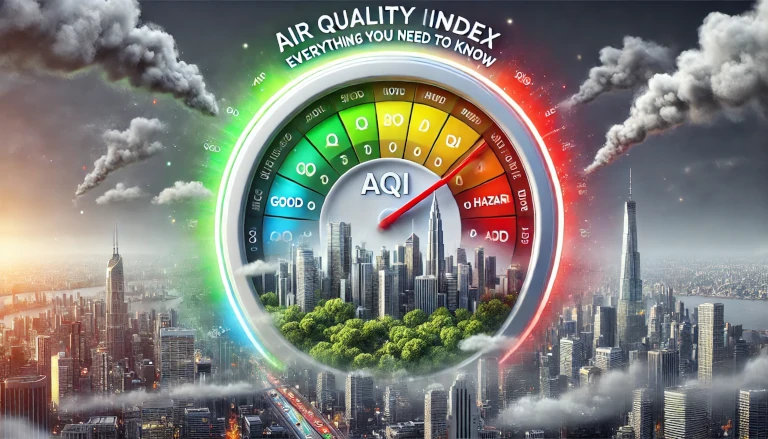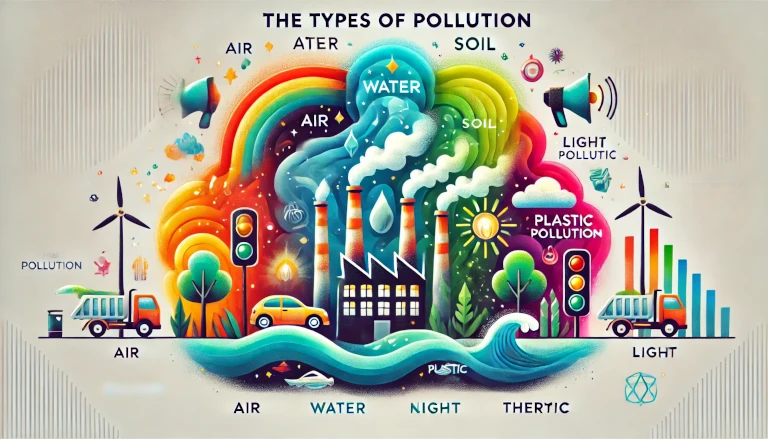The Air Quality Index (AQI) is a tool used to measure and communicate how clean or polluted the air is, and what associated health effects might be a concern for individuals. It’s a critical indicator of environmental health, particularly in urban areas where air pollution is a major concern. The AQI helps people make informed decisions about outdoor activities based on current air quality levels. This guide will cover what AQI is, why it matters, how it is measured, and the benefits of monitoring it regularly.
What is the Air Quality Index (AQI)? 🌡️
The AQI is a numerical scale that runs from 0 to 500, where 0 represents the cleanest air and 500 the most hazardous. It measures the concentration of pollutants like particulate matter (PM2.5, PM10), ground-level ozone (O3), carbon monoxide (CO), sulfur dioxide (SO2), and nitrogen dioxide (NO2). Each of these pollutants has its own scale within the AQI, but the highest value among them determines the overall AQI level for a given location.
AQI Scale and Health Concerns ⚠️
The AQI is typically divided into six categories, each indicating a different level of health concern:
- 0-50 (Good) 🟢: Air quality is satisfactory, posing little or no risk.
- 51-100 (Moderate) 🟡: Air quality is acceptable, but some pollutants may pose a minor health concern for sensitive individuals.
- 101-150 (Unhealthy for Sensitive Groups) 🟠: Older adults, children, and people with respiratory issues may experience health effects.
- 151-200 (Unhealthy) 🔴: Everyone may begin to experience adverse health effects.
- 201-300 (Very Unhealthy) 🟣: Health alert; everyone may experience more serious health effects.
- 301-500 (Hazardous) ⚫: Health warning of emergency conditions; the entire population is more likely to be affected.
Why is AQI Important? 🌬️
The Air Quality Index is essential for informing people about the current air quality in their area, allowing them to adjust their activities to avoid health risks. This is particularly important for:
- Vulnerable groups: including children, the elderly, and people with pre-existing health conditions like asthma or heart disease.
- Outdoor workers: such as construction workers, farmers, and athletes who spend long hours outside.
- Policy makers: The AQI can help governments and local authorities implement air pollution control measures when needed.
How is AQI Measured? ⚙️
The AQI is measured using specialized air monitoring equipment that detects the levels of key pollutants in the atmosphere. These measurements are taken by government bodies like the Environmental Protection Agency (EPA) in the United States, or the Central Pollution Control Board (CPCB) in India. Once the data is collected, it’s converted into an AQI value based on the concentration of pollutants over a specific period of time, typically one hour or 24 hours.
Where Can You Find AQI Information? 🌐
AQI data is widely available through multiple channels:
- Government Websites: Most countries provide real-time AQI data via environmental agencies.
- Weather Apps: Apps like AccuWeather, AirVisual, and IQAir offer AQI forecasts.
- Local News: Many news outlets provide daily AQI updates during weather reports, especially in highly polluted cities.
When Should You Monitor AQI? 📅
It’s important to monitor AQI regularly, especially during:
- High Pollution Seasons: In cities like Delhi or Beijing, winter months often see an increase in air pollution due to smog.
- Extreme Weather Events: Wildfires, dust storms, and other weather events can drastically reduce air quality.
- Sensitive Health Conditions: Those with respiratory conditions or heart disease should check AQI before engaging in outdoor activities.
How Much Does It Cost to Improve AQI? 💰
Improving air quality requires substantial investments in clean energy, public transportation, and pollution control technologies. While the costs can be high, the long-term benefits are considerable. Cleaner air leads to fewer health problems, reducing healthcare costs and improving productivity.
Cost Benefits of Monitoring and Improving AQI 🌍
- Public Health Savings: Reducing pollution levels lowers the incidence of diseases like asthma, bronchitis, and heart disease, saving millions in healthcare costs.
- Increased Productivity: Better air quality leads to fewer sick days, boosting productivity in businesses and schools.
- Environmental Protection: Improving air quality reduces greenhouse gas emissions, contributing to global efforts to combat climate change.
Advantages of Monitoring AQI 🌟
- Real-time Awareness: People can make quick decisions about their outdoor activities based on AQI data.
- Health Protection: Vulnerable groups can avoid exposure to harmful air by staying indoors or using masks.
- Policy Planning: Governments can implement policies to reduce pollution, such as limiting industrial activity on high AQI days.
Disadvantages of Poor AQI ⚖️
- Health Issues: Prolonged exposure to poor air quality can cause serious respiratory and cardiovascular diseases.
- Economic Losses: High levels of air pollution can reduce tourism, hurt outdoor businesses, and result in increased healthcare costs.
Why AQI Matters for Everyone 🌍
The Air Quality Index (AQI) is a vital tool for understanding and managing the quality of the air we breathe. With increased industrialization and urbanization, air pollution is becoming a major concern across the globe. Monitoring the AQI helps individuals, communities, and governments take proactive steps to protect public health and improve environmental quality. As cities continue to grow, focusing on reducing pollution and improving AQI will be critical for sustaining healthy populations and a healthier planet.
The Air Quality Index is a powerful tool that helps you understand how clean or polluted the air is in your area.
Discover more from Green Ecosystem - Renewable Energy, Agriculture, and Environmental Sustainability
Subscribe to get the latest posts sent to your email.


